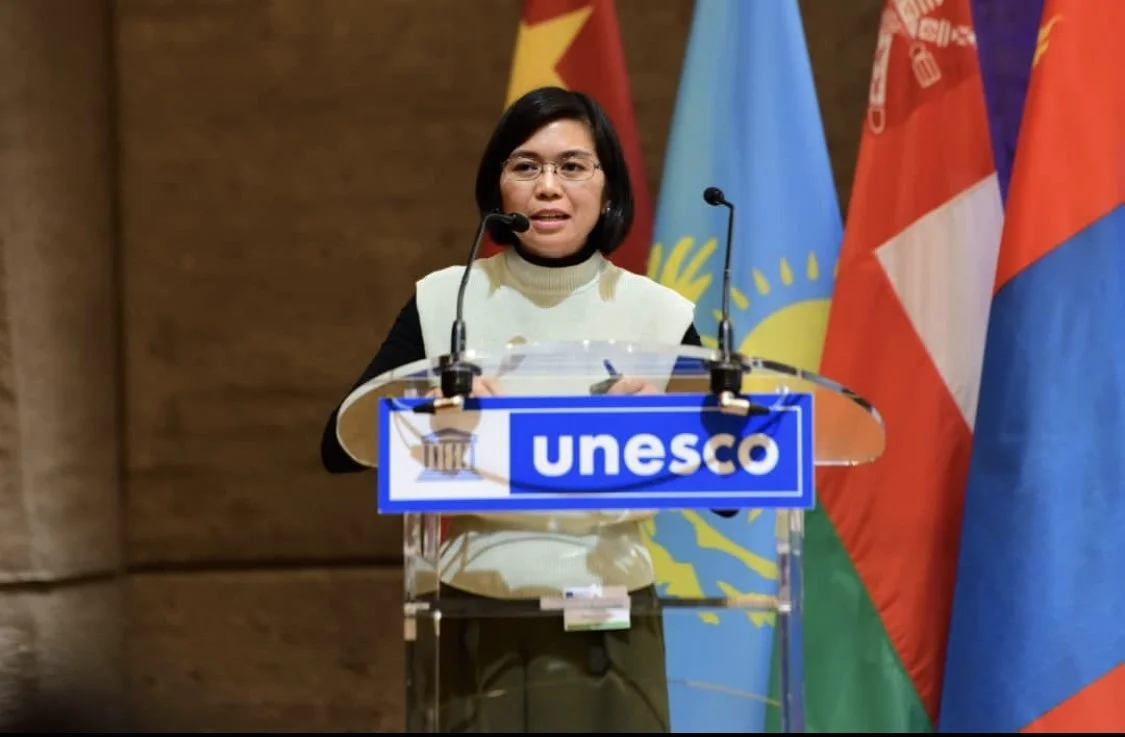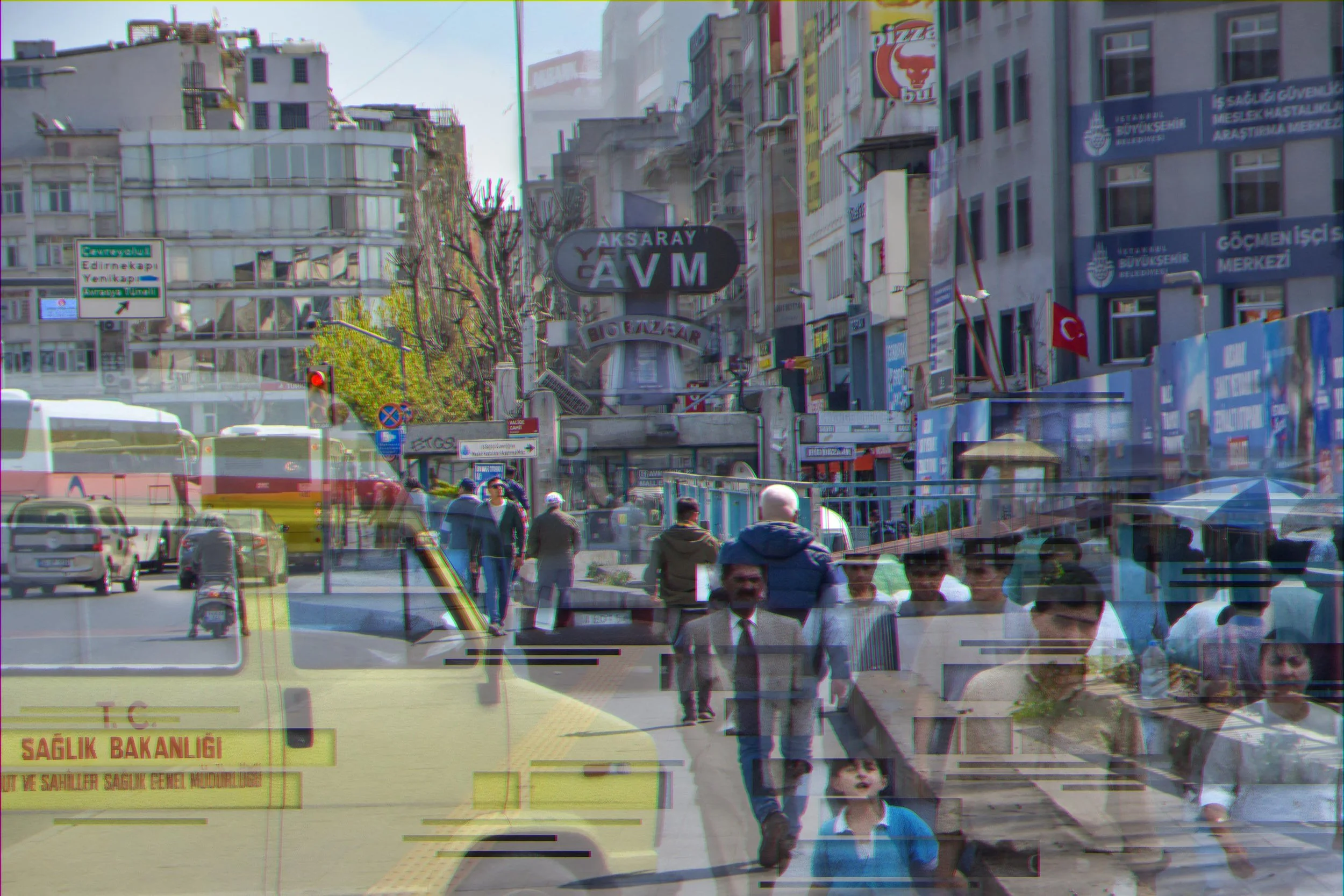10 Questions with Raizel Pauline Albano
Raizel Pauline Albano is an applied anthropologist from the Philippines, currently serving as the founder-director of Anthro on Foot Audio Walking Tours and a writing consultant for UNICEF Philippines. For the past 10 years, she has been a part of initiatives that contribute to strengthening a grassroots approach to community heritage research and policymaking. She was a recipient of the UNESCO Silk Roads Youth Research Grant award for her research on the impact of interactions between the indigenous and global forms of trade, credit, and documentation in maritime Southeast Asia, and her Anthro on Foot project has been a recipient of the UNESCO Global Awards for World Heritage Education for its ‘exemplary practice in inclusivity.’ She took her BA in Anthropology from the University of the Philippines-Diliman and served as the batch head of their field school program. Her practice is rooted in breaking social barriers and democratizing access to quality educational and cultural heritage materials.
Award Solo Presentation UNESCO Silk Roads UNESCO HQ - Paris, April 2023, Photo Credit UNESCO Beijing
INTERVIEW
Let's start from the beginning. Can you tell us about your journey into anthropology? What first drew you to the discipline, and how did your academic experience at the University of the Philippines-Diliman shape your path?
As I look back, I believe that my childhood prepared me for a career in anthropology long before I knew what anthropology was.
I grew up with a father who worked as a military and police officer and a mother who worked as a rural health physician, and so at a young age, I've had the chance to experience traveling in off-the-beaten places, learn how to pack and unpack a travel bag that I can easily grab the last minute, engage on the ground with diverse communities, learn how to be adaptable and flexible, and learn how to watch over myself and my four younger siblings in different situations. I've also learned how important it is to listen and to avoid jumping to conclusions because a lot of the things that we see and hear do not in any way reflect the stories behind these situations.
I'm not romanticizing those early years, and I certainly found myself frustrated many times because of the need to forego many personal needs to go together as a family for my parents' work. But in exchange for those frustrations, more than anything, these experiences have imbued in me a strong sense of service.
I am thankful for my academic experience at UP Diliman because our small department allowed me to explore how I want to pursue this discipline. Doing this degree felt like an extension of my childhood experiences, where my curiosity, flexibility, adaptability, and can-do spirit were appreciated. But more than that, I was provided with the tools that gave me the confidence to pursue anthropology, particularly applied/public anthropology, as a career path.
Your work consistently bridges research and community engagement. How did your early experiences in the field school program influence your approach to participatory heritage work?
I would say that even before entering my field school program, I had always been inclined towards anything participatory; at that time, I didn't even have a name for it. I just knew that I valued harmony. While others value being correct, I value striving for harmony without losing myself in the process. I guess a huge part of this perspective comes down to growing up in diverse situations in diverse communities, where striving for harmony became my lifeline.
And so, coming into my program with this mindset has been beneficial in my training and eventual career in anthropology. The ability to listen with intention, to genuinely want to share an experience, and to put our biases aside as much as possible—because, as humans, I believe it's not entirely possible to absolutely put our biases aside; it's just part of our survival kit—allowed me to naturally incorporate community engagement in my heritage practice.
You founded Anthro on Foot to bring community-based knowledge into public spaces through audio walking tours. What inspired this project, and how has it evolved since its inception?
My inspiration for starting Anthro on Foot comes from the misrepresented and forgotten stories from diverse communities, places, cultures, experiences, and perspectives that I've had the chance to witness early on in my life, in their real form through my parents' work, not through the lens of going on a holiday. The reality of sensationalizing stories and forgetting histories, because they are not "marketable" enough, followed me long after leaving the field.
So, in building my career path, I looked for ways to honour and amplify these stories without sensationalizing or marketing them just to reach that end. With much trial and error, that meant I had to do it outside of traditional media platforms, where, because every second or inch of space is expensive and therefore precious, it can be challenging to lay out long-form stories with longer-form backstories, the latter being a crucial backbone to every heritage story.
Also, because I had this vision of covering as many places in the Philippines as possible, it was important for me to choose a medium that I personally liked and would be comfortable using over and over again to keep the process consistent and sustainable. As more of an audio than a visual person, choosing audio became a prime choice, although I knew it wouldn't be as "saleable" as a walking tour in visual form.
Of course, accessibility is important, too. Publishing audio tours on a popular platform, like YouTube, rather than writing articles or a book, felt more accessible, and I believe it transcends literacy barriers that may constrain people from accessing these kinds of educational materials.
What has been the most challenging aspect of translating complex anthropological ideas into accessible formats for wider audiences?
I believe it's been an advantage for me to lead Anthro on Foot as a non-academic because the way that I deliver these concepts in a practical and digestible way is similar to the way I understand them in my head.
However, the most challenging "translation" aspect of the project is making sure that the heritage tour is, as much as possible, reflective of what the community considers its heritage. It's challenging because different communities have different views of what they consider their "heritage," so what I continue to do is incorporate different communal perspectives to make sure that the tour is truly reflective of the community's diversity. This means, and you can only imagine, the commentaries can be quite long for some of these tours.
Your practice has been recognized for inclusivity, particularly by UNESCO. What does inclusivity mean to you in the context of heritage education and public anthropology?
To me, inclusivity in heritage education and public anthropology means to be heard and to have an accessible platform to be heard. The more communities we're able to hear from, the more that we know we're moving closer to being more inclusive than before.
In Action, Itinerary Testing Vintar Ilocos Norte, Dadapilan - traditional sugarcane process © Raizel Albano
You received the UNESCO Silk Roads Youth Research Grant for your work on indigenous trade and documentation practices in maritime Southeast Asia. Could you share some key insights or discoveries from that research?
This research, entitled "Trade, Credit, and Documentation: The Legacy of the Silk Roads on Maritime Southeast Asia," shows us a different take as to why maritime Southeast Asia, with the exception of Singapore, is progressing the way it is in the context of globalization. And the answer is not as simple as, say, lack of infrastructure or unequal access to education.
The results show that while the overland Silk Roads and the early maritime trading networks became maritime Southeast Asians' first lecturers on the global forms of trade, economics, and documentation, Southeast Asians had to teach themselves how to use and adapt to these global systems— and it is the 'indigenization' of these global lessons that defines the region up until today. It cannot be denied, however, that these adaptations, just to accommodate the needs of the globalmarket, were made to the detriment of local systems already in place.
The "renewal of this passport," required to gain entry to the global community of nations, was made at the cost of systems that favoured harmony and trust in Mother Nature and among community members. For example, indigenous practices, such as swidden farming and high seas fishing, that were meant to balance natural and social systems were eventually criminalized; the entry of the market economy meant that costing was now affirmed by money, not ecological or societal impact; and the introduction of property ownership scrapped altogether the communal need to care for and to benefit from the commons. Nature's gifts eventually became quantifiable.
Moving forward, these insights help us understand more locally appropriate ways to approach communal goals, such as equitable access to education, work, and healthcare. Even more so, these results could also help us understand globalization in reverse: what lessons could Southeast Asians offer the world?
In your view, how do indigenous and global knowledge systems interact or clash in contemporary Southeast Asia?
Research and one of the first to explore this was historian Anthony Reid, tells us that maritime Southeast Asia was one of the most cosmopolitan societies in the ancient world due to several factors, such as its geography, making it a natural stopover for merchants and missionaries sailing along the Pacific Ocean, and the locals' naturally warm reception to people from different cultures because they've been exposed to such diversity early on. Hence, until today, we see diverse cultures with diverse languages and belief systems, even within a tiny region.
This friendly and trusting nature, however, paved the way for colonists to take over the region, bringing with them the cross and the sword, leading to the subversion of local dynamics that have sustained the region for thousands of years.
Given these circumstances, these indigenous and global systems were essentially meant to clash; they simply don't stand on parallel grounds. For example, the concepts of convenience and surplus simply did not exist in pre-colonial maritime Southeast Asian society. Everything had to be earned and shared. However, achieving convenience and surplus, which would have entailed uniformity and standardization, has made globalization possible. This shows us that the sure path to globalization runs against our roots because fully embracing this path means access to social power and money—things that continue to remain inaccessible to many, many people, even transcending generations.
List of Available Tours, iziTRAVEL app © Raizel Albano
Preview of Angeles City Walking Tour, iziTRAVEL app © Raizel Albano
As a writing consultant for UNICEF Philippines, how do you balance academic rigour with advocacy and clear communication in your work?
As a writing consultant for UNICEF Philippines, I'm tasked to bring UNICEF's work closer to the public. To do this, I make sure that I write in plain and clear language, free of ambiguities, even when technicalities are involved.
I am thankful for the field experts I get to work with at UNICEF, for I learn so much from their guidance on how, through the power of words, I could champion the rights of every child and celebrate the many ways the audience can connect to these children.
Are there any upcoming projects, whether in research, writing, or public engagement, that you're particularly excited about or developing?
I aim to make our 61 tours more accessible to more Filipinos, so right now, I am in the process of translating all tours into Filipino, which will be all offered for free. It's a long, laborious process, and I'm giving myself up to two years to finish this goal.
I have also recently received recognition for Anthro on Foot, and this June, I will be receiving two awards in person: for my contribution to "culture and the arts," awarded by my alma mater, St. Scholastica's Academy, and for my contribution to "peace and understanding," in line with the Responsible Tourism Awards 2025, awarded by Responsible Borneo.
I have also been invited to present Anthro on Foot's socially responsible and inclusive storytelling practices at the Walking Arts Encounters in Greece this June and the Walk21 Conference in Albania this October.
I am very thankful for the opportunities that came my way through this audio walking tour project. What started out as a way to ease my frustration with all the gatekeeping involved in accessing quality heritage materials, because I myselfhave been denied access to these archives due to my non-affiliation with an academic institution, it has now grown to 61 tours over the course of six years, and hopefully, now allows more people to learn more about the countless diverse heritage stories around the Philippines.
Lastly, looking ahead, how do you envision the role of applied anthropology evolving in Southeast Asia, especially about community heritage and policymaking?
There is no better way to promote the social contribution of applied anthropology than through practice, so I hope that more practitioners and enthusiasts will continue to align their work, whether this be through employment or a personal project, with principles that really matter to them.
Through the tenets of applied anthropology, hinged on genuine interest and non-judgment, I hope this discipline can help remind us of our shared humanity and our natural inclination towards being understanding and supportive of each other.These goals sound really simple, but somehow, we've made our existence in this world a lot more complicated than it should be.
Going back to these fundamentals, I hope that through our consistent collective work, we could get closer to a more inclusive and accessible community heritage and policymaking practice that will lead us back to and remind us of our roots and our shared heritage, where ego, delusion, and self-righteousness cease to have a space in this practice. Utopian? Maybe. But I believe that with consistent action, this future could be a possibility.
Artist’s Talk
Al-Tiba9 Interviews is a promotional platform for artists to articulate their vision and engage them with our diverse readership through a published art dialogue. The artists are interviewed by Mohamed Benhadj, the founder & curator of Al-Tiba9, to highlight their artistic careers and introduce them to the international contemporary art scene across our vast network of museums, galleries, art professionals, art dealers, collectors, and art lovers across the globe.



















